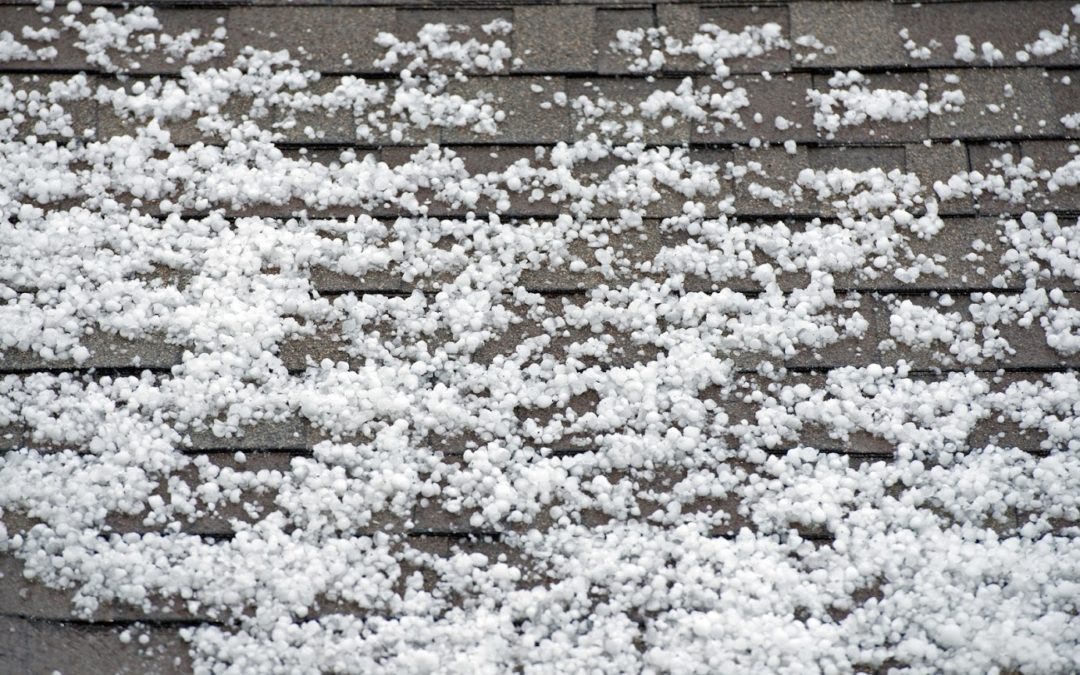If you live in Colorado, your home’s roof may be subject to a range of harsh weather conditions like roof storm damage. As a homeowner in this region, a strong roof is a top priority to protect your home. To protect your roof, always look for any signs of roof storm damage. Regular roof inspections by a licensed roofing contractor identify such roof problems early enough so you can fix the problem before it gets beyond repair.
Keep reading to learn more about the warning signs of roof damage caused by extreme weather and how having a professional inspect your roof can help.
1. Shingles and Granules Loss
Strong winds in Colorado Springs can easily carry off cracked or loose shingles and granules. Shingle loss compromises the strength and functionality of the roof system. The gaps left by missing shingles, for instance, expose your home to water damage, mold infestation, wood rot, and rust, and can lead to the destruction of your drywalls.
Additionally, granules offer protection from UV light, add aesthetic beauty, and provide fire resistance for the shingle roof. With continued exposure to extreme weather, granule loss leaves your roof vulnerable.
During a roof inspection, a contractor checks all your roof sections to detect any loss of shingles or granules. As an experienced contractor in Colorado Springs, this will allow us to catch developing problems such as curled, brittle, or deteriorated shingles, or weakened seals. From this assessment, you can determine whether to repair or replace the shingles.
2. Clogged or Broken Gutters
Gutters play a critical role in roof protection, but they don’t get the attention they deserve. Poor roof drainage can lead to costly water damage to the roof and the rest of the structure. The regular gutter inspection identifies any hindrances to the smooth flow of water from your roof.
Hail storms, and other extreme weather phenomena in Colorado Springs, can pile up debris in the gutter system. With time, the debris blocks the gutters and downspouts. A blocked gutter can cause roof damage and also affect your home’s foundation.
Following rain or snowmelt, the water from your roof flows down foundation walls when it doesn’t have gutters to go through. With time, the water pushes through cracks on the walls and widens them. The water can cause damage to the wooden and metal components of your foundation.
3. Wall Flashing Problems
Flashing faces exposed to the elements, leaving it vulnerable to damage. The structural component of the roof secures exposed joints and directs water away from these vulnerable sections.
In Colorado Springs, we use functional flashing to protect your roof and increases its life. In storm-prone areas, however, flashing can suffer weather damage such as dents or breakages. Such damage reduces the effectiveness of your roof’s flashing. An experienced contractor assesses the damage to determine whether to replace the entire section or repair the roof storm-damaged area.
4. Fiberglass Mat Damage
Fiberglass mat is a lightweight and water-resistant layer that makes it easy to install your asphalt shingle roof. However, hail and harsh weather can shatter this roof foundation and compromise the strength of your shingle roof system. Any tears or cracks on the matting are hard to detect, so you will need a professional roofer to pinpoint such weather damage.
Before you begin a roof restoration project in Colorado Springs, your contractor carries out an extensive inspection to reveal any weather damage. From their findings, the professionals identify areas that require urgent repairs or replacement. Your roofing contractor works to restore the roof to its former glory and safeguard it from more weather damage.
For all your roof storm damage needs in Colorado Springs, contact us at Empire Roofing and Restoration for a free quote. We have served this community for over 29 years, delivering outstanding restoration and remodeling solutions.

